Student Blog
What are OS/OT?
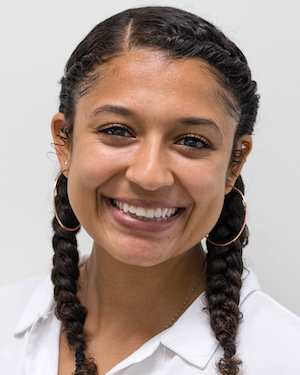
Fight on in Fieldwork ✌ ⟩
November 4, 2019, by Kat
Fieldwork What are OS/OT?
October 21st–25th . . . my full week of fieldwork . . .
This semester, for my adult rehab level I fieldwork, I was placed at Providence Saint John’s Health Center in Santa Monica. A moment of honesty . . . prior to this placement I had little knowledge about what OTs did in the hospital setting. I remember walking in on my first day in scrubs and not knowing what to expect. On my first day I got put to the test though! My CI (clinical instructor) had a patient that was in the ICU (intensive care unit) who she was going to co-treat with a PT. The patient’s case was quite complicated and they needed help. I helped manage the patient’s lines (meaning I helped with all of the IV’s and tubes) as the OT and PT helped the patient sit on the edge of his bed. This small task of managing a patient’s lines gave me great insight into the impact that an acute inpatient OT can have on a person. Throughout my time at St. John’s I have learned that OTs in the hospital setting are essential to the safety and quality of life of patients. Not only do they ensure that a patient can be safe with their self-care routine, but they also help develop or fine tune the skills necessary for patients to be able to continue participating in the activities that are important to them — their meaningful occupations!
During my full week, I was able to see so many things. I was in the inpatient wings, the NICU (with the wittle babies!), and also had a trip down to the ER to see what a respiratory therapist does and how their work can influence the work an OT does. I was busssyyy! But I had so much fun. Also, how cool is it that my CI is an alumni from USC?! I can honestly say that I am blessed to be shadowing and working with the AMAZING Ally Buescher. I have learned so much from her. She has high expectations for me as a level I student which is pushing me to develop my clinical reasoning skills. She also has so much knowledge about the field and about the program at USC, which is helpful when I have a million questions.
USC has a deep line-up when it comes to networking. USC releases talented OTs into the world and many of them host students for their fieldwork. We literally have people everywhere! National and international possibilities are available. It is nice to know that as a student, I am well taken care of by the fieldwork coordinators here in the Chan Division. The fieldwork opportunities I have been able to experience so far have been one of a kind. My first ever level I fieldwork experience was a competitive Skid Row Housing Trust position where I was mentored by the renowned Dr. Deborah Pitts! This specific mentorship was made possible because of a city grant that was established for the Fall of 2018. Here’s a little more info about Level I fieldwork.
Long story short, my full week of fieldwork was a blast and USC offers remarkable fieldwork experiences!
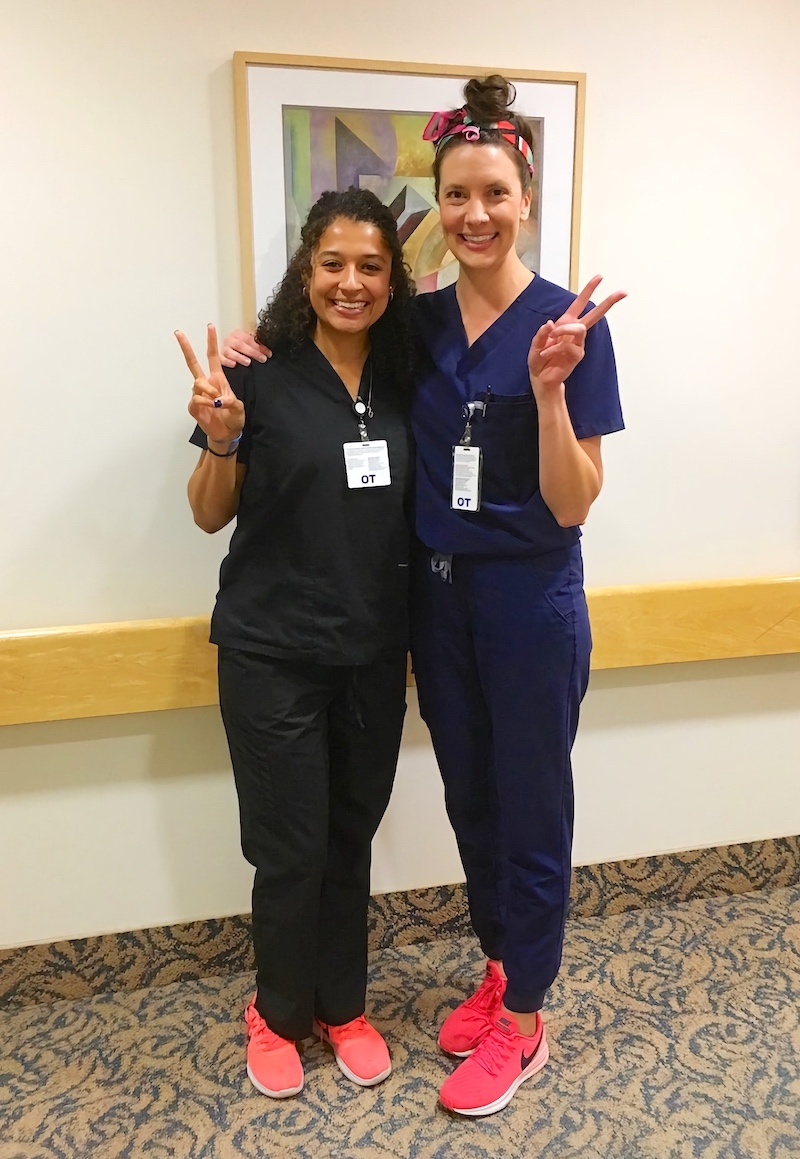
Ally and I reppin that Trojan life! Fight on! ✌ PS, we coordinate our shoe game
⋯

Fight On for Mental Health! ⟩
October 21, 2019, by Japeth
Life Hacks What are OS/OT?
Among all the months in a year, my most favorite is October. Aside from it being my birthday month, it is also a time for advocates of mental health to further raise awareness about it. Advocating for mental health is not easy, and sometimes it even feels like an uphill climb. For some, it is an issue that can be disregarded easily and for others, it can be very debilitating. For me, our mental health is just as important as our physical health and we owe it to ourselves to take care of it.
Last 2017, I joined a mental health awareness event at a hospital where I was doing my internship. We did some Tai Chi techniques and our leader talked about the effects of Tai Chi on relaxation. Last year, I became active in attending mental health talks and meetings together with some doctors and government officials. This year, to celebrate mental health awareness month, my friends and I decided to watch a movie: Joker.
My take on the movie:
(I am not a film critic; I am just using my OT lens!)
Producing a movie about mental health is a tough thing to do, since not everyone may appreciate it. However, kudos to the whole production team for a well portrayed movie. Joker, the character in the story, went through so much since he was young. Growing up, life was very tough for him. He did not have a good social support and his work environment was also very unsupportive and unhealthy. Moreover, society in general was kind of judgmental towards him and was not very accommodating to his needs. On the other hand, one thing I personally did not like about the movie was the part that the character started to fight back by being extra aggressive.
Moving away from the movie and talking about my own thoughts:
Mental health issues may stem from different sources — some may develop due to childhood trauma, stress and overwork, some may be genetically predisposed, et cetera. Having mental health issues is not wrong and it needs professional help from the right individuals. And we, occupational therapists, have a huge role in mental health practice. If we all move forward together, we can advance our role and collectively, we can help bring change in society.
The rise of mental health issues is growing dramatically over the years, but our response as a community is not at par with its rise, yet. However, knowing that a lot of people are becoming more active in advocating for it, I feel that we are not too far from a world that is more inclusive despite of mental health issues.
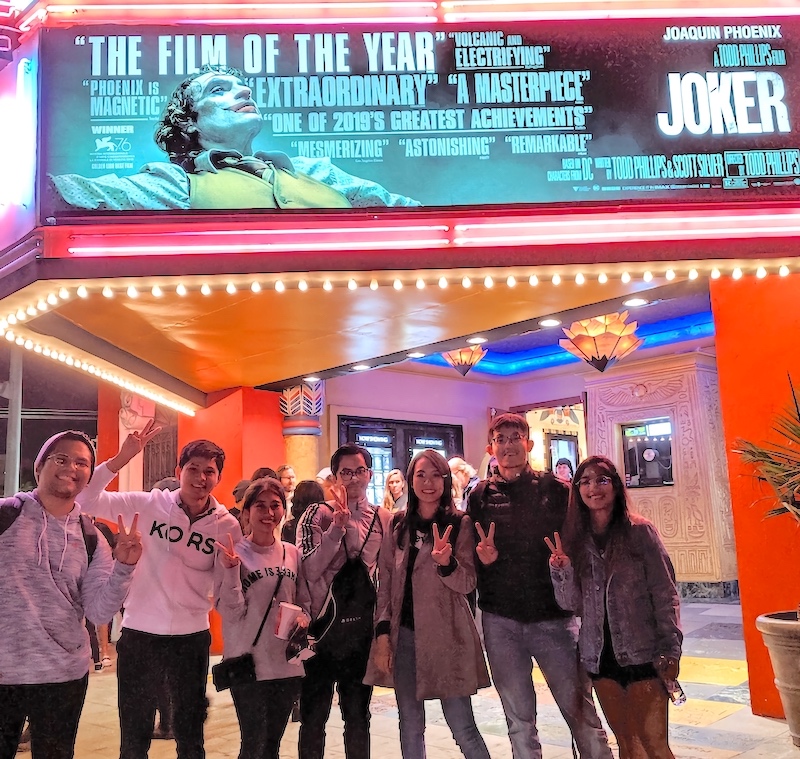
Fight On for Mental Health!
Please note that the views expressed in this blog post are the opinion of the student and in no way represent an official position of USC Chan.
⋯
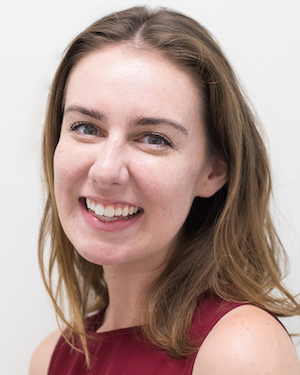
What a Difference a Year Makes! ⟩
September 3, 2019, by Noelle
Life Hacks What are OS/OT?
I introduced myself to someone at the main campus the other day and when they asked me what year I was in I was super excited to say “I’m a second year grad student!” I think I shocked him with my enthusiasm, but what he didn’t know was that my answer to that question used to be . . . complicated. Last year, I was straddling the identities of undergraduate senior and 1st year Master’s student; I was a grad student that hadn’t actually graduated yet. Entering my 5th year of the Bachelor’s to Master’s OT program, I have become very accustomed to explaining every aspect of my student identity — answering the questions: “What is Occupational Therapy? When do you graduate? Wait, so how old are you?” And now that I have officially graduated from undergrad, my spiel is much less confusing. More importantly, I’ve noticed a change in my attitude and feelings about my student identity.
The transition to graduate school is major for anyone whether it happens before, immediately following, or several years after completing undergrad. And last year, I felt it acutely. I missed all of the elective courses I used to take, not starting class until 11 am on some days, the freedom to take naps during the week!!! It’s not that I didn’t love the course material we were learning or the people in the program, it was just at times I wished I had one more year of all of that like the rest of my undergrad friends. But as my mom always says, nothing lasts forever!
I’ll be honest and say that I was very anxious to start this year. I have the responsibilities of this position as an ambassador and the demands of all of my courses, not to mention the huge decisions regarding the OTD coming my way (I’ll leave that for another entry though!). Although I’ve been studying OT for 4 years now, I’m still unsure where exactly I want my path to lead. Despite this uncertainty about my future (which is quite recent by the way), I came home from the first day of class this semester with unexpected peace of mind. I have my bachelor’s degree and a level 2 fieldwork under my belt, and I am just as thrilled to be an OT student as I was my freshman year. This year is sure to bring more changes and surprises that will influence this path I’m always talking about, and I just have to keep reminding myself how wonderful it is to be where I am and that the best is yet to come.
P.S. I originally wanted to title my entries with song titles (yes, like Grey’s Anatomy), but that was going to be harder than I imagined. So instead I’m going to include a song recommendation that may or may not relate to the entry 😊 This week’s pick happens to: “Ooh Child” by The Five Stair Steps.
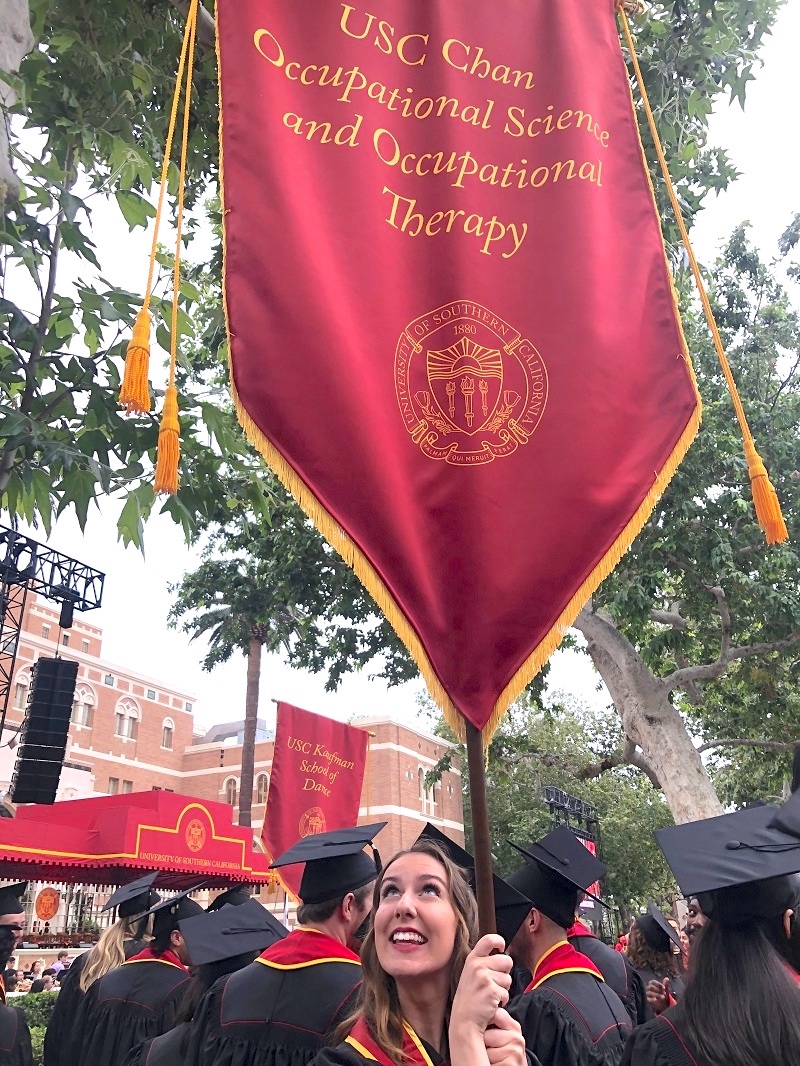
Me holding the banner at Commencement 2019
⋯

Why Occupational Therapy? ⟩
September 3, 2019, by Kevin
What are OS/OT?
Why did I choose occupational therapy? This is a question that I have been asked countless times during my time at USC. While I usually have a quick one-line statement to summarize my decision to pursue this career, here is the full story:
After graduating from San Diego State, I moved up to Los Angeles and began looking for jobs. Quickly, I found a position working at a company that provides behavioral therapy to children with a variety of diagnoses. While I found that work rewarding and I loved the population, there was something missing from the experience that I couldn’t quite put a finger on. Then one day at work, I shadowed my client’s occupational therapist and had a lightbulb moment that this was what I had been missing. The way the client responded to the therapy and the nature of using occupation as a means of therapy was the piece of the puzzle that I was searching for in a career. To be able to build authentic relationships with people while assisting their development was my idea of a perfect profession. Since attending USC, I have experienced the joy of aiding others to participate in the activities that bring meaning to their life. Each day I feel lucky to have discovered this gem of a profession and to be surrounded by instructors and peers who truly share the same passion and drive for occupational therapy.
⋯
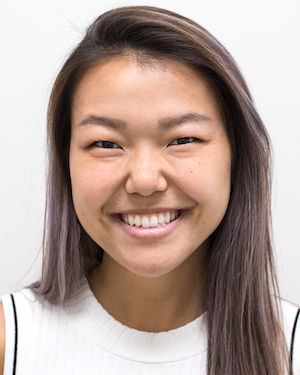
Why Occupational Therapy? ⟩
August 29, 2019, by Kaho
What are OS/OT?
I’ve always thought that I would pursue a career in the health field, but I thought that I was meant to become a doctor. It wasn’t until my sophomore year of college that I started to question whether I was pursuing a career as a doctor because I was actually passionate about it, or because I had never learned much about the other existing health professions. As I started to explore and research more options, I fell upon occupational therapy.
The first thing that pulled me towards it is the deep, personal relationship that OTs build with their clients. They get to know their clients as a unique human being in various contexts and they are dedicated to helping people engage in activities/roles that are meaningful to them. I love that occupational therapy integrates mental health with physical health because I am passionate about both. The more I learned about the profession, the more I fell in love with it and the more I felt like this was truly what I was meant to be. (Also worthy to mention that occupational therapy is ranked #13 by U.S. News as one of the best jobs of 2019!) I began the process of looking up potential schools and the prerequisites for applying to those schools. I began volunteering in various hospitals in order to see real OTs in action. For example, I observed a hand therapist during my junior year of college and over the summers when I would fly home to Japan for several months, I volunteered in the geriatric department at several hospitals. I still had trouble explaining to people what exactly occupational therapy is and I now know that my knowledge of the profession at that time was still very limited, but I was confident that I had found my dream job.
Occupational therapy is truly an incredible and beautiful profession and this past year in the program has expanded my interests on what population I want to serve in what setting. I am very fortunate to be studying occupational therapy at one of the leading universities of the profession and I am thrilled to continue learning and growing and see what all is in store for my last year in the program!
⋯





